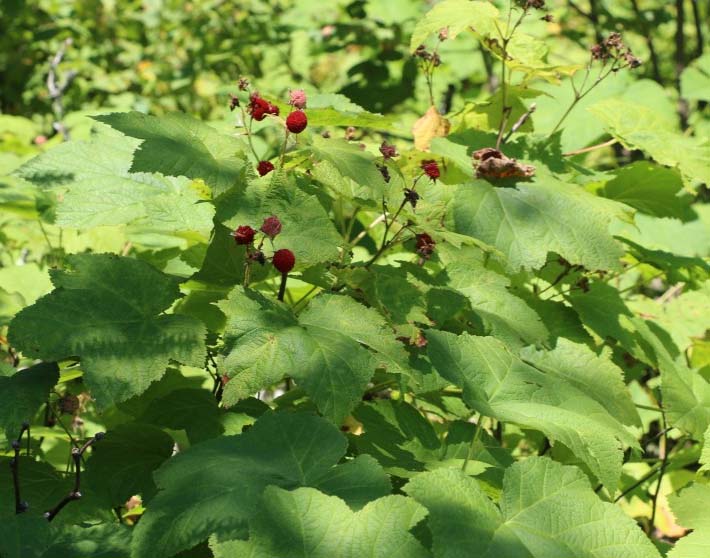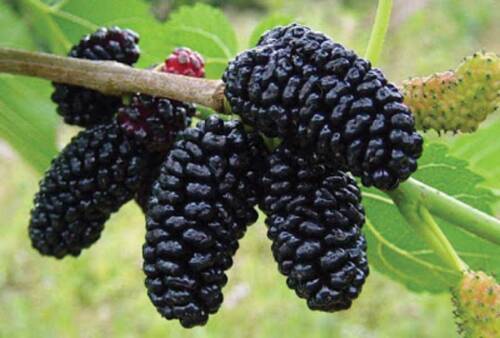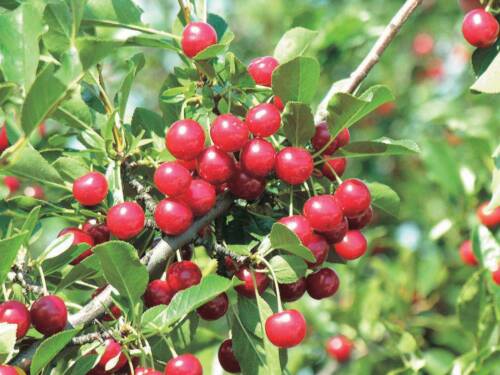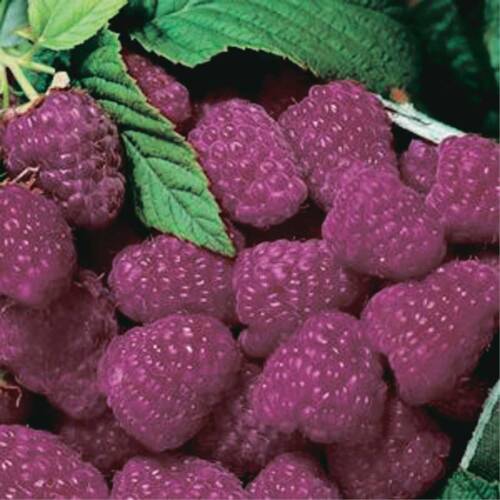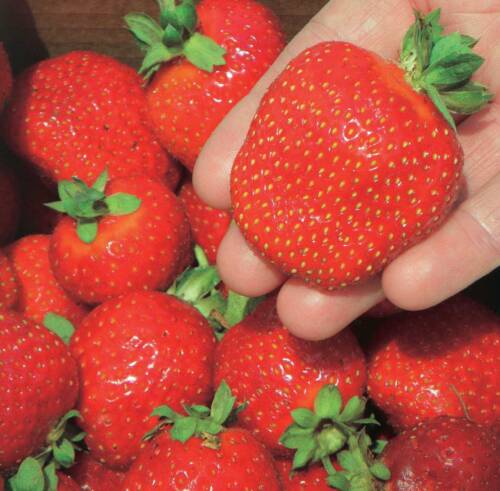Description
The vigorous plants grow to a height of .9-1.5 m (3-5 ft) with smooth stems. The plants will produce pure white flowers on 2 year canes…a spectacular show in the spring! The fruits are sweet and juicy with some tartness, great for fresh eating or use in juice and jams. The leaves are quite large, approximately 10-15 cm (4-6 in) long and wide and is a spectacular lime green in the summer, changing to bright yellow in the autumn–making this an outstanding landscape plant also!
Thimbleberry’s real name is Rubus parviflorus. It is in the Rosaceae (Rose) family and is in the same genus (Rubus) as raspberry, blackberry, loganberry, boysenberry, tayberry, dewberry and many others. Rubus fruit are an aggregate fruit composed of small, individual drupes, each individual is termed a drupelet. In a sense they are many little berries grouped together to make one large berry.
Medicinally
The young shoots, roots and leaves have been used to treat many ailments. A tea is made of the leaves or roots as a blood tonic in the treatment of nausea, vomiting, diarrhea and dysentery. Its effects are believed to tone and strengthen the stomach helping increase appetite. Rich in vitamin C, Thimbleberry helps boost your immune system and was used to ward off scurvy. A poultice of the dried powdered leaves treats wounds and burns and the fresh leaves can be crushed and applied to treat acne. A mixture from boiling the roots has also been taken to treat acne.
Planting Instructions
Printable: Growing Thimbleberries


